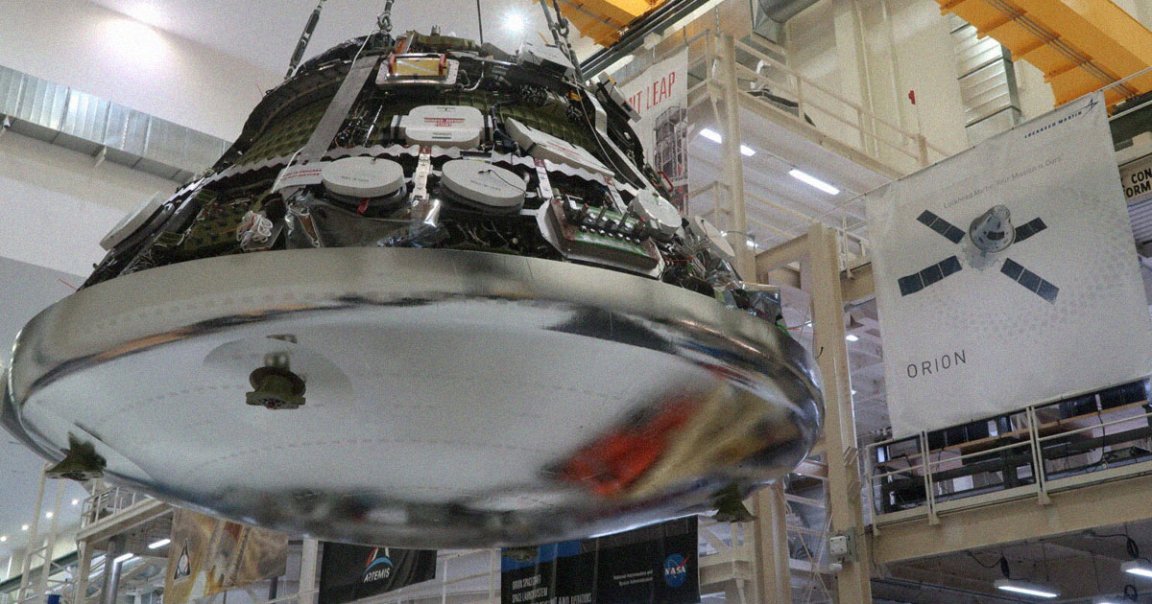
Piece by Piece
We’re slowly inching closer to getting US astronauts back to the Moon.
As Space.com reports, NASA has made big progress on the construction of its Orion spacecraft, the manned capsule scheduled to carry four astronauts to and around the Moon as part of NASA’s Artemis II mission, which is slated to launch next year.
According to the space agency, the rocket’s separately constructed crew and service modules — the former built by Lockheed Martin, the latter built by the European Space Agency (ESA) — were officially joined together last week, and the rocket will soon undergo a series of rigorous testing to ensure it’s ready for flight.
“The team will power up the combined crew and service module for the first time,” a NASA update reads. “After power-on tests are complete, Orion will begin altitude chamber testing, which will put the spacecraft through conditions as close as possible to the environment it will experience in the vacuum of deep space.”
Assuming all goes well — and a lot can still go wrong between now and the mission — it’s an exciting step forward for the Artemis program, which NASA projects will return astronauts to the lunar surface by 2025.
Earning Wings
According to a separate statement from the ESA, the upcoming trials will include the thermal cycle test, or an assessment of the craft’s ability to withstand extreme temperatures, and the direct field acoustic test (DFAT), which evaluates whether the rocket can withstand launch vibrations.
Orion is tasked with carrying the US astronauts Reid Wiseman, Victor Glover, and Christina Koch, as well as Canadian Space Agency astronaut Jeremy Hansen, around the Moon and back — the furthest that any human has ever traveled into space, according to NASA.
But there’s still a long way for Orion to go.
“Next year will be a busy time for the Orion teams,” the ESA’s statement continued, adding that scientists and engineers will soon be installing the spacecraft’s solar wings, filling its tanks with rocket propellant, and eventually connecting it to the launch abort system.
After all of that, the rocket will finally be affixed to the top of NASA’s absolutely massive Space Launch System rocket.
And in the meantime, the Orion crew will be keeping busy preparing for the challenges of spaceflight, according to Jacki Mahaffey, chief training officer for Artemis II.
“The crew is making incredible progress,” she said in a recent statement, as they get “ready for their flight as the first people to fly inside NASA’s newest spacecraft built for deep space.”